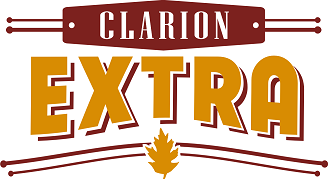Every county in the region has an opportunity zone, but few have been developed.
On Monday, Congressman Glenn Thompson conducted a summit at Clarion University to help local leaders develop those zones.
Joe DeFelice, Mid-Atlantic regional administrator for the Department of Housing and Urban Development, explained that an opportunity zone is for an “economically-distressed community where private investments, under certain conditions, may be eligible for capital gain tax incentives.”
DeFelice said there are more than 8,760 designated qualified opportunity zones in all 50 states, the District of Columbia and five U.S. territories.
The value, according to DeFelice, is that investors can defer tax on any prior gains invested in a Qualified Opportunity Fund until Dec. 31, 2026.
The Economic Development Administration (EDA) provides strategic investments through competitive grants that foster job creation and attract private investment to support development in economically distressed areas of the U.S.
DeFelice said the “EDA is encouraging our economic development partners to think of opportunity zone investment as a new tool to not only enhance business interests but also to encourage the public/private partnerships needed to drive private investment to distressed areas.”
DeFelice praised Franklin for its recovery efforts. He said Franklin offers a microbrewery and theater that encourages people to move into second floor apartments in the city.
“More and more Americans are working from home and Franklin offers people who want the amenities of an urban center without living in an urban area,” he said.
DeFelice encouraged county leaders present to develop roundtables. He said there are three roundtables in Venango County and two each in Clarion and Jefferson counties.
DeFelice said funding might be available to remedy blighted areas or “pockets of blight.”
Scott Deitrich, Department of Community and Economic Development project manager for the Governor’s Action Team, explained the value of Keystone Opportunity Zones (KOZ).
He said that as of Dec. 31, 2017, applicants for the zones have created 7,278 jobs and invested $2,609,725,991 in private capital into the KOZ properties.
“Due to the tremendous success of the KOZ initiative, there have been multiple opportunities for local communities to designate additional subzones,” he said.
“There are a lot of smart people in Washington, D.C. who design these programs, but the cookie cutter approach may not work in rural Pennsylvania,” Deitrich said. “It is up to us to get the word out. We need to track our results so that we have this opportunity for another 10 years. The best insurance we have to get this legislation extended is to be successful,” Deitrich added.

